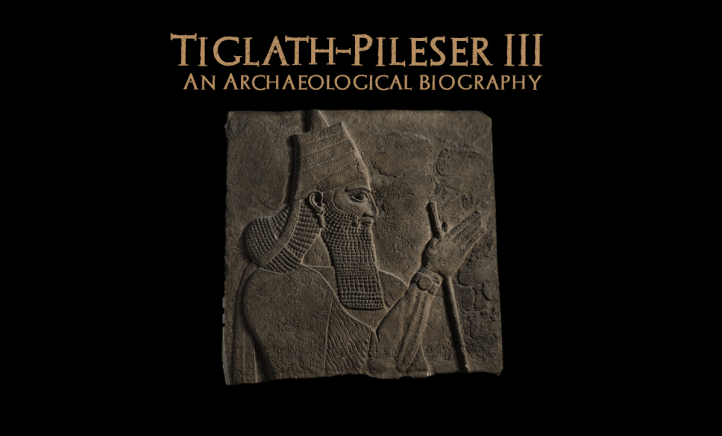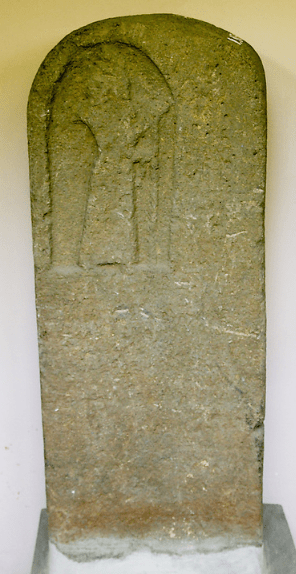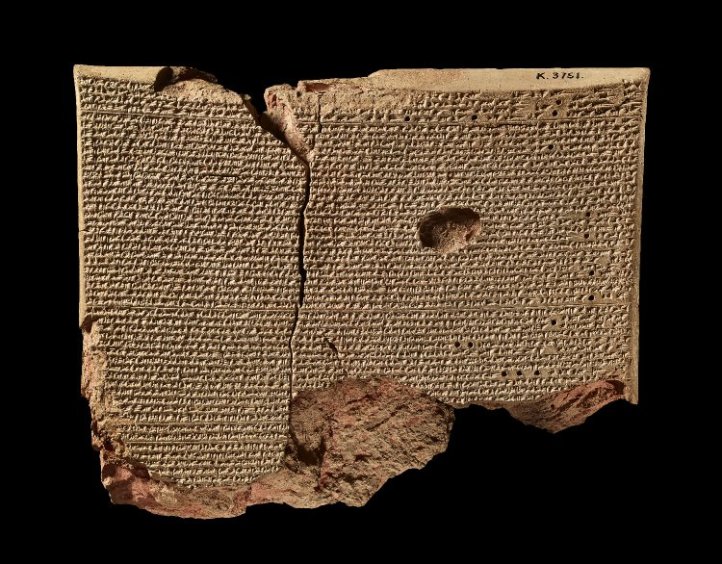
One of the greatest Assyrian kings is the subject of our next bioarchaeography: Tiglath-Pileser III.

In the spring of 745 BC, Pulu, the governor of Calah, seized the Assyrian throne during a rebellion against the weak king, Ashur-nirari V. He assumed the name, Tiglath-Pileser, and quickly reorganized the kingdom by centralizing his power and creating a standing army.1 As with many ancient kings, his thoughts turned to expanding his empire; Tiglath-Pileser III led various campaigns, subjugating lands both near and far, including the area of the southern Levant. He ruled from ca. 745-727 BC, eventually merging the kingdoms of Assyria and Babylonia.2
Tiglath-Pileser III had significant interactions with the kings of Judah and Israel which are recorded in Scripture, as well as in Assyrian inscriptions. He seems to have been actively involved with the politics of the southern Levant.
In biblical descriptions the Assyrian king is called both Pul (2 Kings 15:19) and Tiglath-Pileser (2 Kings 15:29). The same is true in extra-biblical inscriptions, as Tiglath-Pileser is referred to as “Puwal, the great king of Assyria,” on the Incirli Trilingual Inscription3 and as Pulu in Babylonian inscriptions.4
Tiglath-Pileser III and Menahem, King of Israel

In 743 BC, Tiglath-Pileser III marched toward the Mediterranean and received tribute from many of the kings of the area.5 One of those kings was Menahem, King of Israel. In 2 Kings 15:19 we read, “Then Pul king of Assyria invaded the land, and Menahem gave him a thousand talents of silver to gain his support and strengthen his own hold on the kingdom.” In Assyrian inscriptions, Tiglath-Pilesar III boasts, “As for Menahem I overwhelmed him like a snowstorm and he . . . fled like a bird, alone, and bowed to my feet”6 “Menahem of Samaria” is also listed as one of the 17 kings of the west from whom he received tribute. What was that tribute? He claims to have received from these kings, “gold, silver, tin, iron, elephant-hides, ivory, linen garments with multicolored trimmings, blue-dyed wool, purple-dyed, wool, ebony-wood, boxwood-wood, whatever was precious enough for a royal treasure.”7
Tiglath-Pileser III and Ahaz, King of Judah
Years later, Pekah, an Israelite official, assassinated Menahem’s son, Pekahiah, and succeeded him as king (2 Kings 15:25). He teamed up with Rezen, King of Syria, and laid siege to Jerusalem. Ahaz, the King of Judah, turned to Tiglath-Pilesar III for help:
“So Ahaz sent messengers to Tiglath-pileser king of Assyria, saying, “I am your servant and your son. Come up and rescue me from the hand of the king of Syria and from the hand of the king of Israel, who are attacking me.” Ahaz also took the silver and gold that was found in the house of the LORD and in the treasures of the king’s house and sent a present to the king of Assyria. And the king of Assyria listened to him.” (2Kings 16:7-9a)
A clay tablet called the “Annals of Tiglath-Pilesar III” was discovered in his palace in 1873 when Austen Henry Layard excavated at Calah (Nimrud). Technically, the tablet is not an annal in the sense of being a year-by-year description of his reign, but rather a summary statement of Tiglath-Pileser’s military and building accomplishments.8 It lists a group of kings in the southern Levant who paid him tribute of “gold, silver, tin, multi-colored garments, linen garments, red-purple wool, [all kinds of] costly articles, produce of the sea (and) dry land, the commodities of their lands, royal treasures, horses (and) mules broken to the yo[ke]…”9 Among the kings listed is “Jeohahaz the Judahite.” This inscription confirms the tribute the Bible describes King Ahaz bringing to Tiglath-Pileser III, although the biblical inventory lists only what Ahaz gave, or only the most precious items of gold and silver.

Tiglath Pileser III and Hoshea, King of Israel
In 2Kings 15:30 Scripture records that “Hoshea son of Elah conspired against Pekah son of Remaliah. He attacked and assassinated him, and then succeeded him as king in the twentieth year of Jotham son of Uzziah.” If the Annals of Tiglath-Pilesar III are to be believed, he was behind the assassination. He says, “They overthrew their king Pekah and I placed Hoshea as king over them. I received from them 10 talents of gold, 1,000(?) talents of silver as their tribute and brought them to Assyria.”10
Eventually, all of Syria was conquered by the Assyrians and Tiglath-Pileser III deported people from the northern half of Israel.11 2 Kings 15:29 records, “In the days of Pekah king of Israel, Tiglath-Pileser king of Assyria came and captured Ijon, Abel-beth-maacah, Janoah, Kedesh, Hazor, Gilead, and Galilee, all the land of Naphtali, and he carried the people captive to Assyria.” In an Assyrian inscription, Tiglath-Pileser III likely refers to this event: “Israel (lit . : “Omri-Land”)…all its inhabitants (and) their possessions I led to Assyria.”12

Summary
The Bible describes the interactions between Tiglath-Pileser III and various Hebrew kings. Assyrian inscriptions describe these same interactions, albeit from the Assyrian perspective. At many points, the details in Scripture are affirmed by details in the Assyrian texts.
When Tiglath-Pileser III died in ca. 727 BC, he left a kingdom that he had expanded through his military conquests and reforms, such that the neo-Assyrian empire would continue to be the world’s greatest kingdom for more than 100 years to come.
Title Photo of Tiglath-Pileser III: The British Museum / CC BY-NC-SA 4.0
Endnotes:
1 Donald John Wiseman, “Tiglath-Pileser III,” Encyclopædia Britannica, April 25, 2017. https://www.britannica.com/place/Babylon-ancient-city-Mesopotamia-Asia (Accessed Oct. 29 2019)
2 Ibid.
3 Kaufman, Stephen A., “The Phoenician Inscription of the Incirli Trilingual: A Tentative Reconstruction and Translation,” MAARAV 14.2(2007): 7-26. Summarized online: https://balshanut.wordpress.com/2009/01/26/kaufman-stephen-a-the-phoenician-inscription-of-the-incirli-trilingual-a-tentative-reconstruction-and-translation-maarav-1422007-7-26/ (Accessed Oct. 30, 2019).
4 Ewin R. Thiele, The Mysterious Numbers of the Hebrew Kings, (Grand Rapids: Zondervan Publishing House, 1983), 125.
5 Ibid, 125.
6 ANET 284.
7 ANET 283.
8 Clyde E. Fant and Mitchell G. Reddish, Lost Treasures of the Bible. (Grand Rapids: William B. Eerdmans Publishing Company, 2008), 131.
9 Ibid, 131.
10 ANET 284.
11 Alfred Hoerth and John McRay, Bible Archaeology: An Exploration of the History and Culture of Early Civilizations, (Grand Rapids: Baker Books, 2005), 52.
12 ANET 284.

[…] figures. So far we’ve studied King Hezekiah, Pontius Pilate, Nebuchadnezzar, Gallio, and Tiglath-Pileser III. With each of these biblical characters, we’ve seen direct archaeological evidence that affirms […]
[…] The Biblical Archaeology Report sums up the results of archaeological research on Sergius Paulus, the proconsul mentioned in Acts 13 (here), and on Tiglath-Pileser III, the king of Assyria mentioned in 2 Kings 15 (here). […]
[…] bioarchaeographies, we’ve used archaeology to explore the lives of the great Assyrian king, Tiglath-Pileser III, and the great Babylonian king, Nebuchadnezzar II. It seems fitting that we should look at a king […]
[…] seems fitting that, having explored the lives of Hebrew, Assyrian, Babylonian, and Persian kings, we should now consider an Egyptian Pharaoh. While many Pharaohs […]
[…] tribute has been confirmed in Assyrian records. When the palace of Tiglath-Pileser III was unearthed in 1873, numerous inscriptions summarizing the king’s accomplishments were […]
Please help me out. I often read that Pul is confirmed to be Tilgathpilneser by this stelle, but no one explains how. Thank you
Hi George, the identification of Pul as Tiglath Pileser is confirmed in two ways: 1) In 1Chron 5:26, we read, “So the God of Israel stirred up the spirit of Pul king of Assyria (that is, Tiglath-Pileser king of Assyria)…” 2) In the Phoenician inscription from Incirli, which refers to Tiglath-Pileser, he is called, “Pu’lu, the great king of Assyria.” I hope this helps. Thanks for reading and engaging with my blog.
Hello, thank you for replying.
1Chornicles 5:26 in fact makes them different: 1Ch 5:26 And the God of Israel stirred up the spirit of Pul king of Assyria, and the spirit of Tilgathpilneser king of Assyria, and he carried them away, even the Reubenites, and the Gadites, and the half tribe of Manasseh, and brought them unto Halah, and Habor, and Hara, and to the river Gozan, unto this day.
The reading was changed to “that is” not because of manuscript evidence, but specifically to match scholarly opinion (although a number of scholars disagreed that Pul was Tiglathpileser).
The Incirli Stele mentions in line 1 & 4 combining “Tiglathpileser” and “Pul” is extremely unusual. In fact unique.
“The name Pul, while having, according to Prof. Rawlinson, its counterpart among known Babylonian names, is wholly alien to the rules on which Assyrian names are formed. They are “always compounds, consisting of two, three, or more characters’ (Anc. Mon. ii, 388, note). The name is probably the same as the Sanscrit pala, lofty, highest; hence lord, king; perhaps the same as bel, i.e. lord. The same syllable is found in the names Sardanacal/us and Nabopolassar [Babylonians]. ” – Cyclopedia of Biblical, Theological and Ecclesiastical Literature – Pul, 2.
““That Pul was a Babylonian holding rule in Assyria at this time is confirmed by the notice of Alexander Polyhistor (Euseb. Chronicles i, 4): ‘Post hos alt exstitisse Chald/eorum regem, cui nomen Phulus erat;” -Ibid
The Babylonian usurper of the throne of Assyria, Pul, had assumed the Assyrian throne-name Tiglathpileser from two more-legitimate predecessors: hence Tiglathpileser Pul, as in the Incirli Stele. Tiglathpileser III – not Pul – would have recovered that name upon deposing Tiglathpileser Pul, in effect declaring that he was true and legitimate heir to the Tiglathpilesers of old, not Pul. He then proceeded to eradicate Pul from the records.
“A mutilated brick inscription states that he is the son of Adad-nirari (III); however, the Assyrian King List makes Tiglath-pileser (III) the son of Ahur-nirari (V), son of Adad-nirari (III). This is quite a discrepancy for the King list places Adad-nirari III four monarchs before Tiglath-pileser’s reign and depicts Ashur-nirari (V) as both his father and immediate predecessor upon the throne. The list goes on to relate that Shalmaneser III (IV), and Ashur-dan III (III) were brothers, being the sons of Adad-nirari (III). Ashur-nirari (V) is also said to be a son of Adad-nirari (III), implying brotherhood with Shalmaneser III (IV), and Ashur-dan III (III). The Assyrian records contain very little information concerning Adad-nirari (III) and nothing about Shalmaneser III (IV) or Ashur-dan III (III). Significantly, an alabaster stele was discovered in 1894 at Tell Abta displaying the name Tiglath-pileser imprinted over that of Shalmaneser (IV), a successor of Adad-Nirari (III) and the third sovereign prior to Tiglath-pileser (III). This find coupled with the aforementioned absence of information relative to Shalmaneser III (IV) and Ashur-dan III (III) strongly implies that Tiglath-pileser was a usurper to the throne and that he destroyed the records of his three immediate predecessors—Ashur-nirari (V), Shalmaneser III (IV), and Ashur-dan III (III).” – Jones 2005, p. 150.
Of course Jones doesn’t list Pul because he thinks Pul and Tiglathpileser III are the same. Thus the latter succeeded in his endeavour to eradicate Pul.
[…] our series of bioarchaeographies, we’ve alternated between Old Testament people, such as Tiglath-Pileser III, Nebuchadnezzar, Cyrus, Shishak, King David, Ahaz, Hezekiah, and Omri, and New Testament figures, […]
I see in the Tiglath-Pileser article that the footnotes say – ANET – what does this stand for. Sorry I couldn’t figure it out myself.
Ancient Near Eastern Texts Relating to the Old Testament, by James B. Pritchard. In academic writing, it is often shortened to ANET in footnotes.